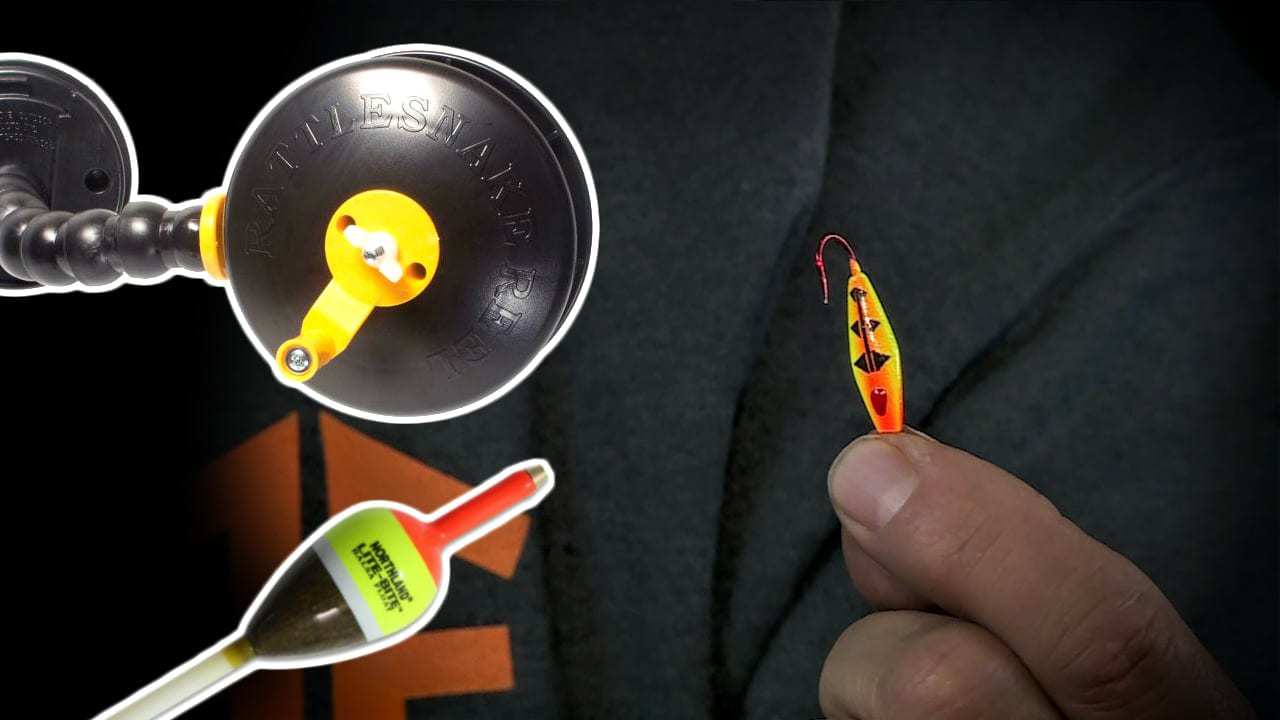Mike Hehner demonstrates how to get your rattle reels rigged and ready to go for the ice season.
In this article, we will discuss the essential components for setting up a rattle reel in your wheelhouse for fishing. A rattle reel is a great addition to your fishing setup as it allows you to fish continuously even when you’re not actively looking. It alerts you when you have a bite, ensuring that you never miss an opportunity to catch a fish.
The Rattle Reel
One of the most important things to have in your wheelhouse for fishing is a rattle reel. A good option is the Catch Cover Rattlesnake Reel, which features CDs that produce loud rattling sounds. The tension of the reel can be adjusted according to the type of fish you are targeting.
Choosing the Right Line
When rigging your rattle reel, the type of line you choose is crucial. While the poundage of the line is not a significant factor, the type of line can make a difference. In the past, people used Dacron or nylon line, which tended to tangle up and become messy when reeling in a fish. However, nowadays, coated lines like the Suffix Coated Performance Tip Up Line are preferred. These lines are slippery and easy to handle, making it easier to reel in and manage the line without any mess.
Setting Up the Rattle Reel
After selecting the appropriate line, it’s time to set up the rattle reel. The setup may vary depending on the type of fish you are targeting, but the basic components remain the same. Start by attaching a slipknot to the main line, followed by a bead and a slip bobber. At the end of the line, attach a swivel to connect the leader.
Choosing the Leader Length and Material
The length of the leader is a matter of personal preference. It can range from as short as two to three feet to as long as six to eight feet, depending on the clarity of the water you are fishing in. When it comes to the leader material, fluorocarbon is highly recommended. Fluorocarbon leaders are nearly invisible in the water and are more resistant to toothy critters like pike biting through them.
Adding Weight and Hooks
To ensure proper presentation and control of your bait, it’s essential to add some weight to your setup. A small split shot placed on the line will provide the perfect amount of weight to keep your bait at the desired depth. Additionally, you can use a cork to hold the weight in place.
When it comes to hooks, you have a few options. A plain hook, such as the octopus hook, is a simple and effective choice for using live minnows as bait. Alternatively, you can opt for a glowing hook, like the Northland Glow Shot Jig, which not only attracts fish but also adds weight to your setup. Another option is the Clam Blade Jig, which is a smaller jig that can accommodate smaller minnows.
Conclusion In conclusion, setting up a rattle reel in your wheelhouse for fishing requires a few essential components. The Catch Cover Rattlesnake Reel is a recommended choice for its loud rattling sounds and adjustable tension. When it comes to the line, coated lines like the Suffix Coated Performance Tip Up Line are preferred for their slipperiness and ease of handling.
The setup of the rattle reel includes attaching a slipknot, bead, slip bobber, and swivel to the main line. The length of the leader can vary based on personal preference and water clarity, with fluorocarbon leaders being the best choice for their invisibility and resistance to toothy critters. Adding a small split shot to the line provides the necessary weight, and using hooks like the plain octopus hook, Northland Glow Shot Jig, or Clam Blade Jig allows for different bait options.
With these components in place, you can effectively rig your rattle reel for your wheelhouse and increase your chances of catching fish.










